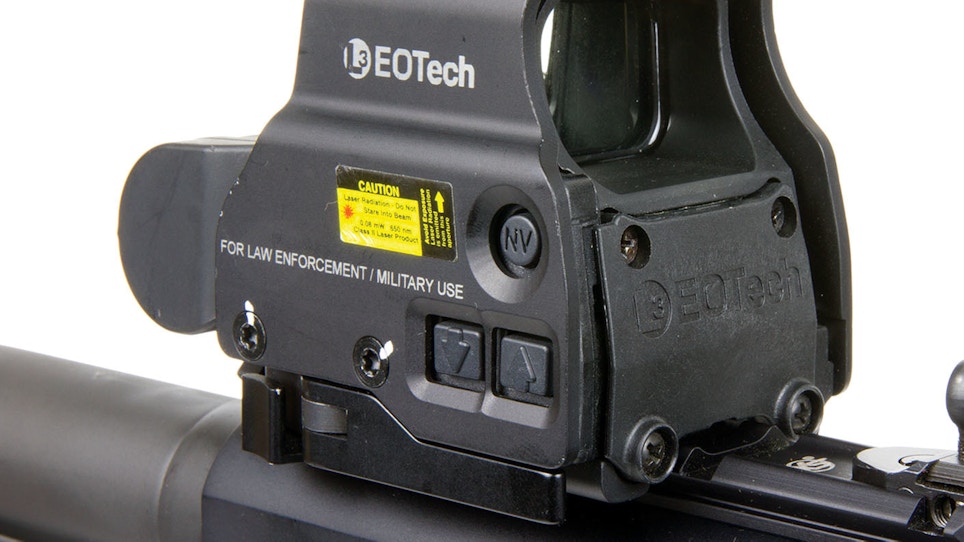You cannot just point the shotgun in the general direction of a bad guy and expect to make a hit. And that is especially true at the short distances inside a house. The pattern does not spread out that fast, and anyone who thinks it does needs to pattern a shotgun at five or so yards to discover the truth.
A defensive shotgun needs to be aimed. A shotgun can be a precision shooting instrument with the right ammunition, as long as the shooter is competent and has tested the gun in hand and the gun has a sighting system.
Even buckshot or birdshot at close range does not spread out like the movies portray. With a high quality shotgun and ammunition, the pattern with either load at three to five yards is going to be only a few inches at most. I’ve personally shot a Mossberg 590A1 at a range of five yards at a paper target using Hornady self-defense buckshot, and the hole in the target was only about two to three inches in diameter. If I were not aiming the gun, it would have been easy to miss the target. And I’m a pretty fair shooter. Try it if you don’t believe me.
There are several sighting options for shotguns. While a front bead and ramp or grooved rear receiver can work — and some experienced shotgunners actually prefer that setup — other options on a defensive shotgun are iron sights, lasers and red dots. Iron sights can be open sights or a ghost ring rear sight with a blade front sight, which is favored by many. Adding tritium to the sights is a plus and helps the shooter see the sights in low light.
To mount sights, often the shotgun must be modified. Many defensive shotguns come with the ability to accept iron sights, but if the shotgun does not accept them or was originally a sporting shotgun for wingshooting, a gunsmith can usually make the necessary modifications to the receiver and barrel. Don’t hesitate to point out to your customer that even though a gun may be set up for wingshooting, it may still be a candidate for a defensive shotgun with some modifications. In fact, shorter replacement barrels are not uncommon and can often be found for a longer barreled sporting shotgun.
If the shooter settles on a red-dot or laser, it is an excellent idea to also have iron sights installed on the shotgun. While lights and lasers are extremely reliable these days — the devices have seen huge improvements since they were originally introduced — they are still electronic devices powered by batteries. They can fail. If and when they do, good iron sights can be immediately used to aim the shot.
But whatever sighting system the customer settles on, the gun must be zeroed. After all, the projectile, or projectiles in the case of buckshot or birdshot, must hit where the gun is aimed. A good distance for which a shotgun is zeroed is up to the shooter and the intended use. Fifteen yards is common, but whatever the distance, a smart shotgunner will pattern and test-fire the gun and exact ammunition that will be used at various ranges so that he or she will know how large the pattern is and where the projectile or projectiles will impact at every distance. And the shooter will remember it or write it down. That knowledge could save someone’s life.






